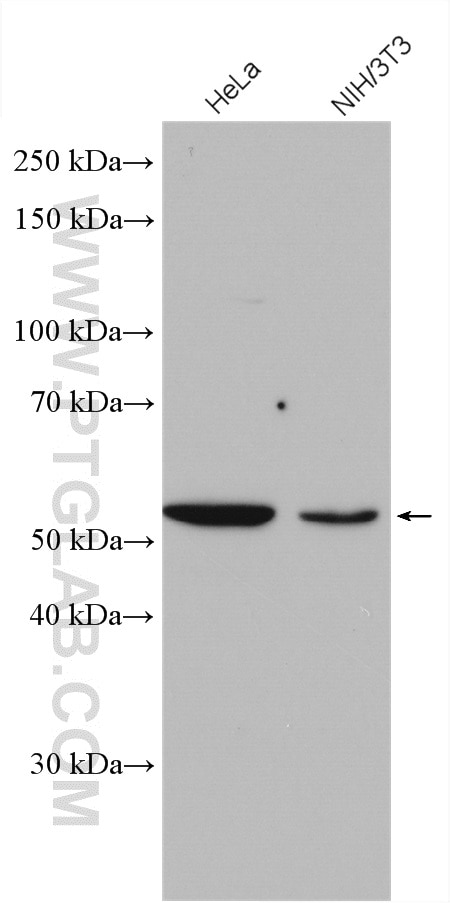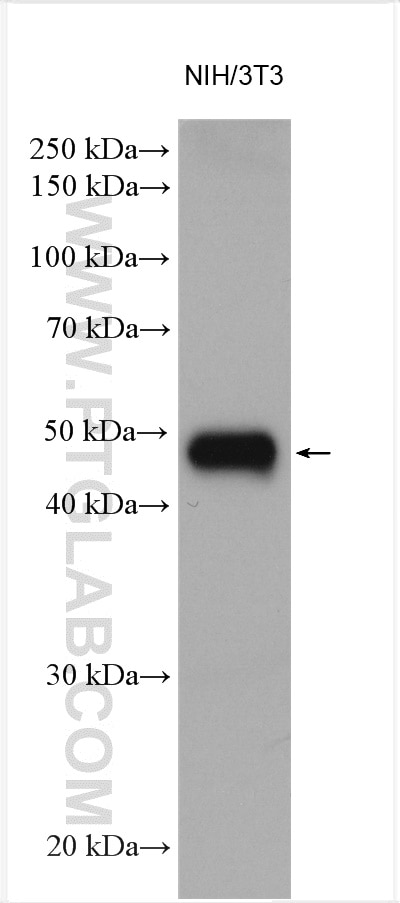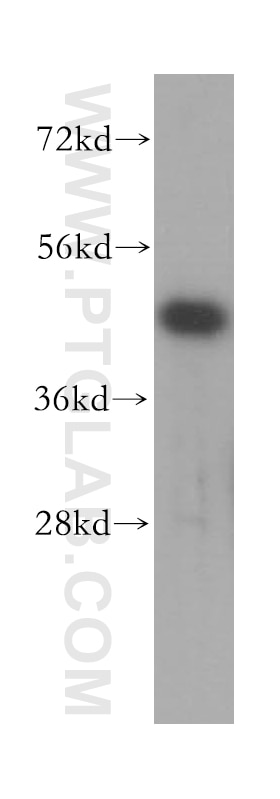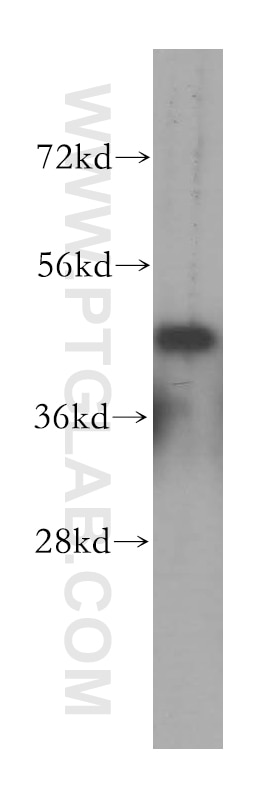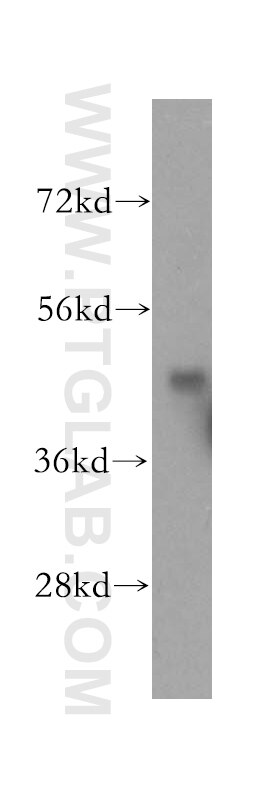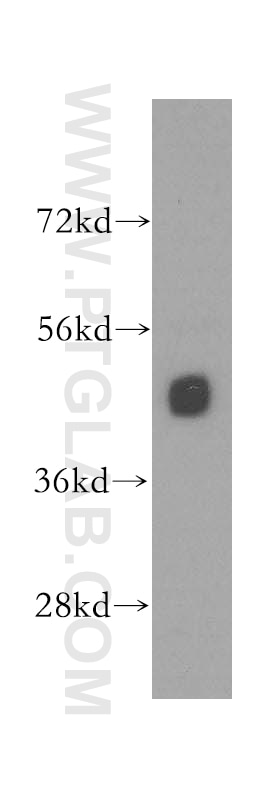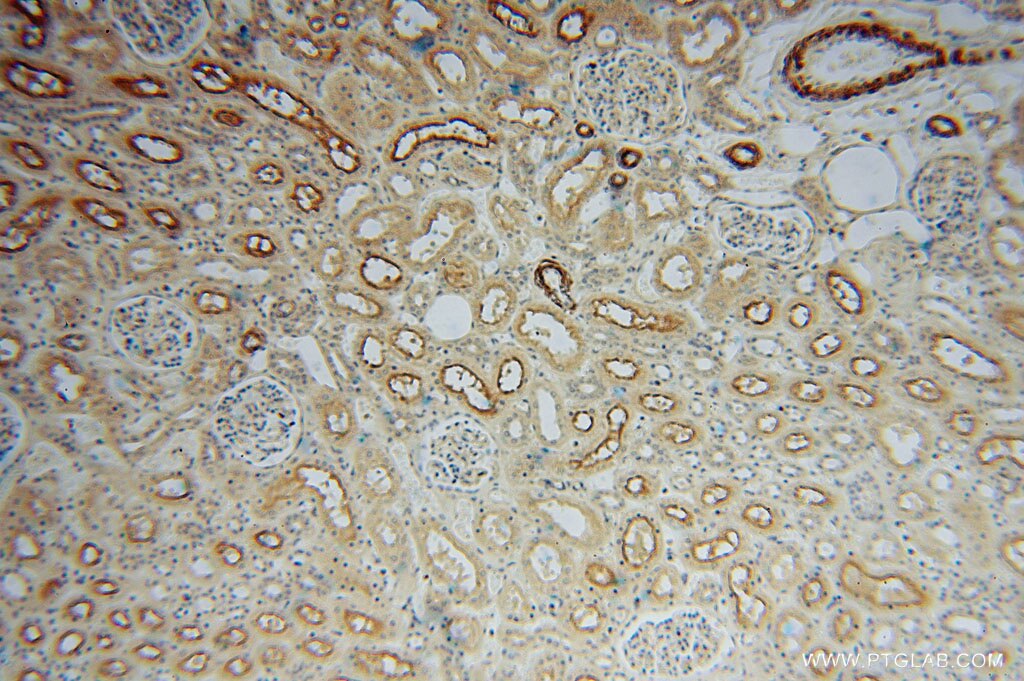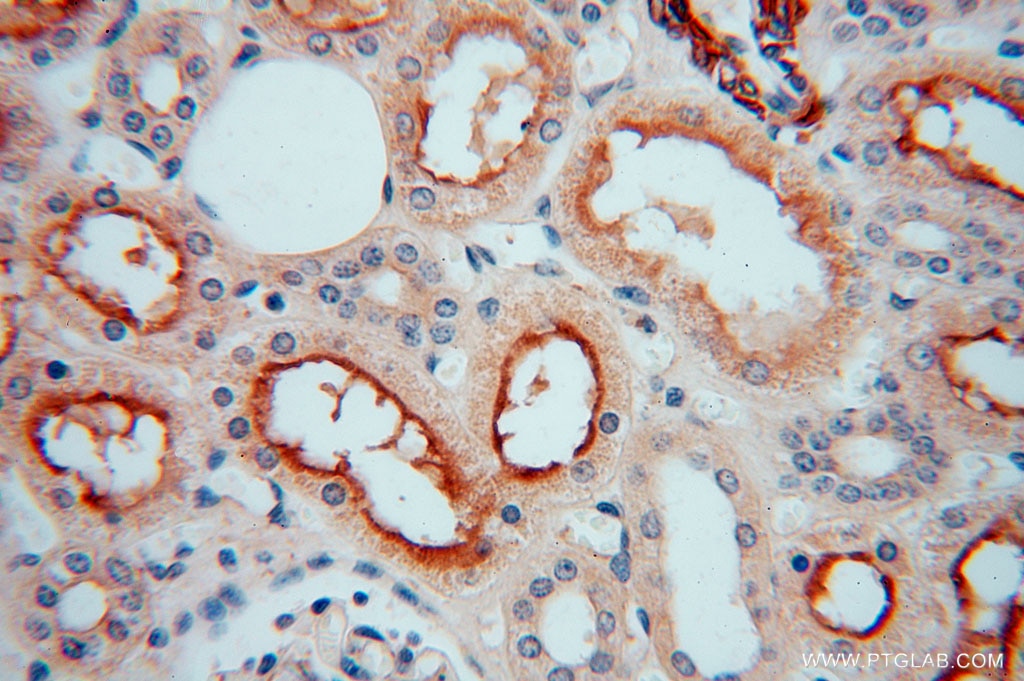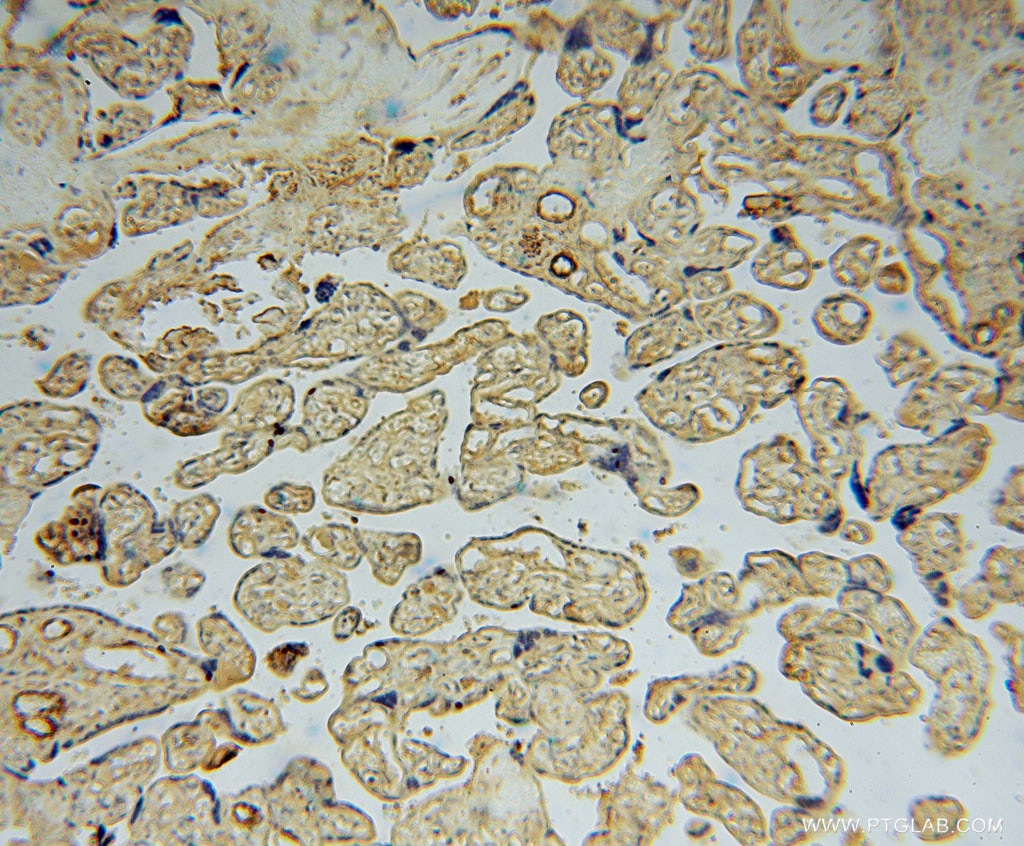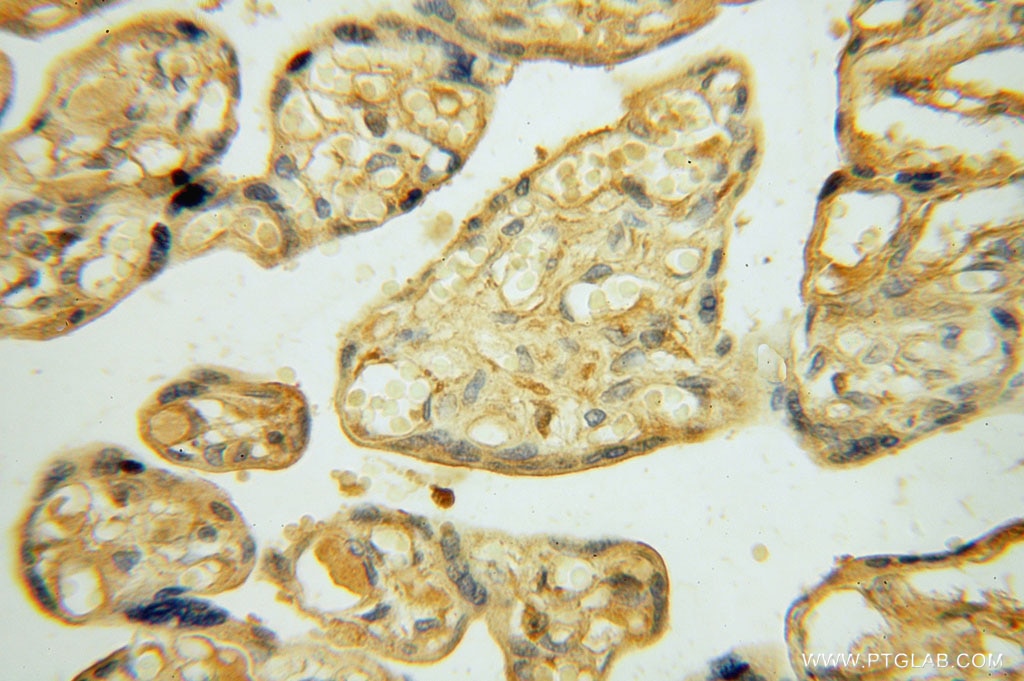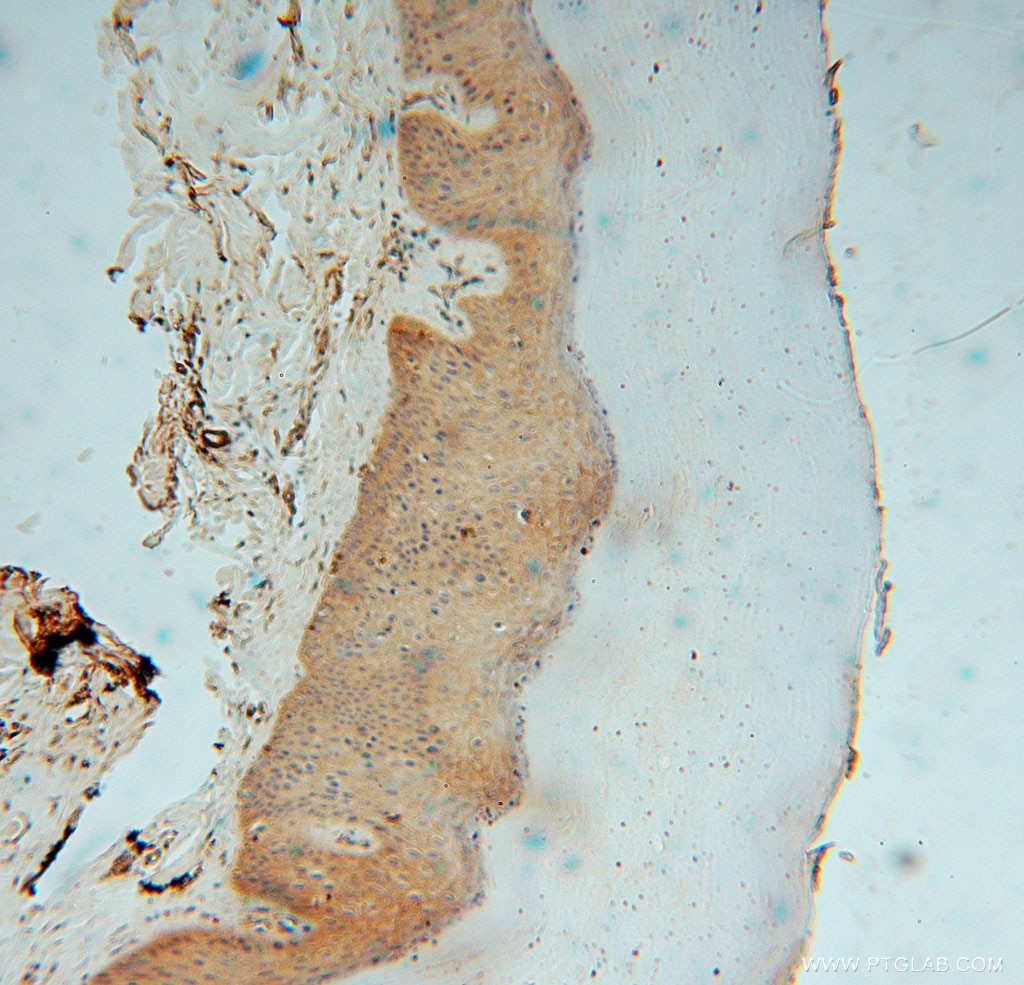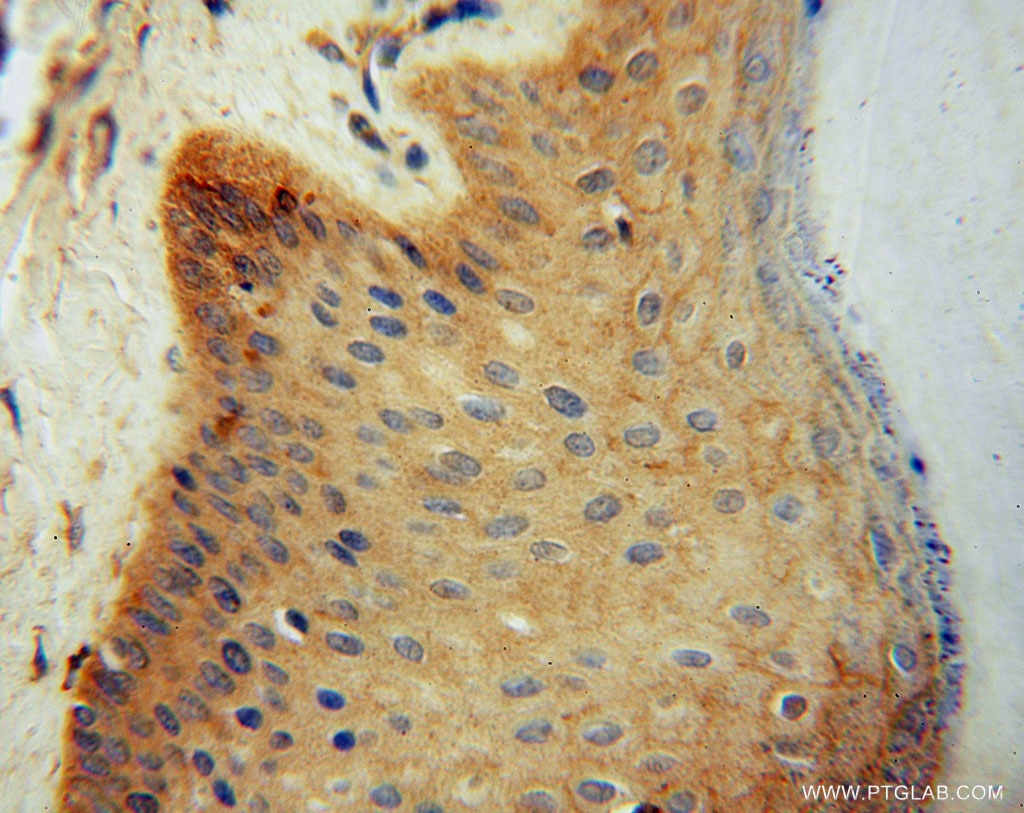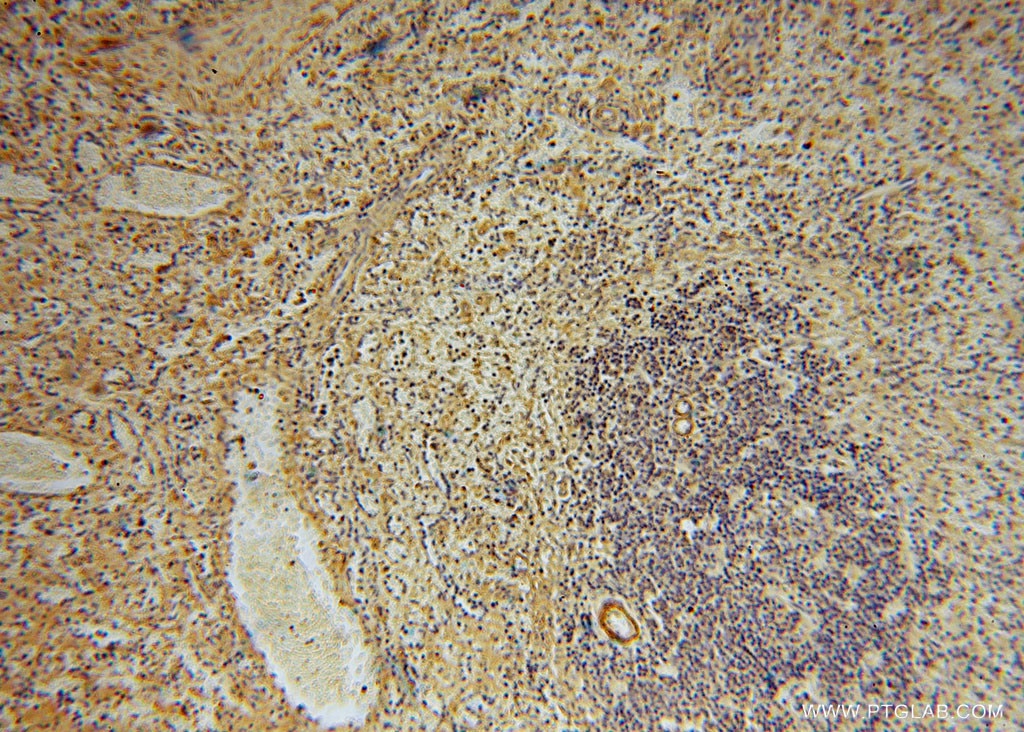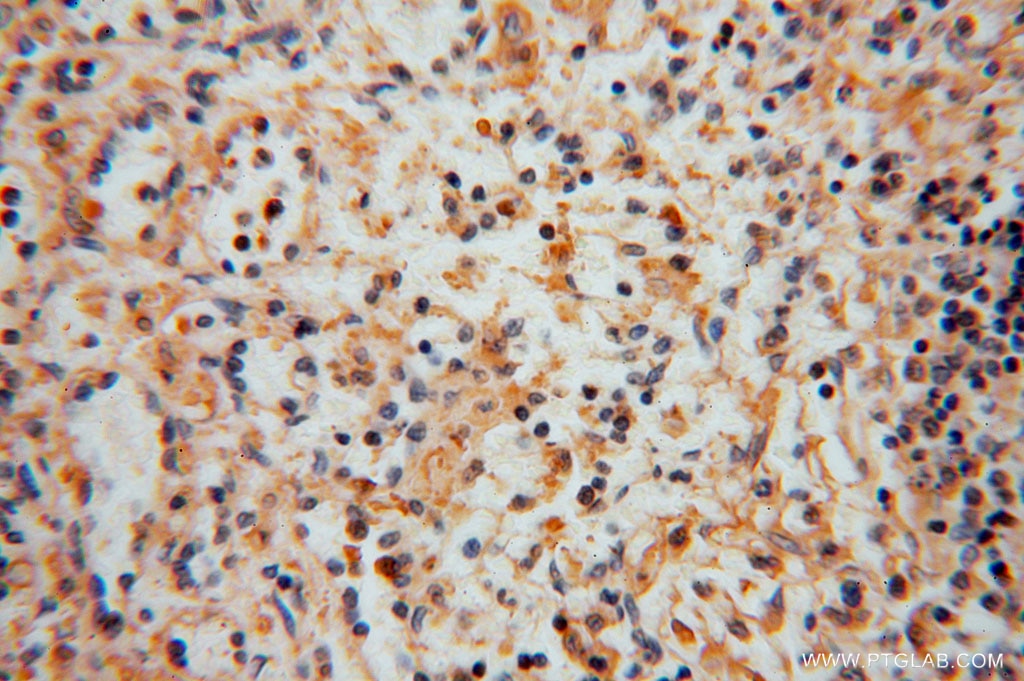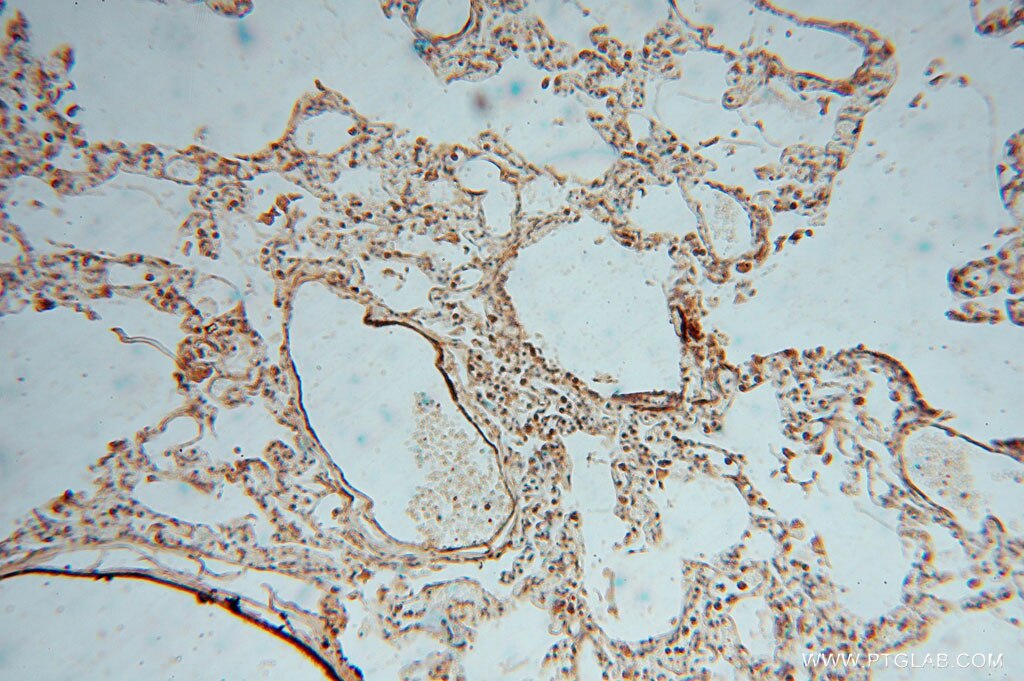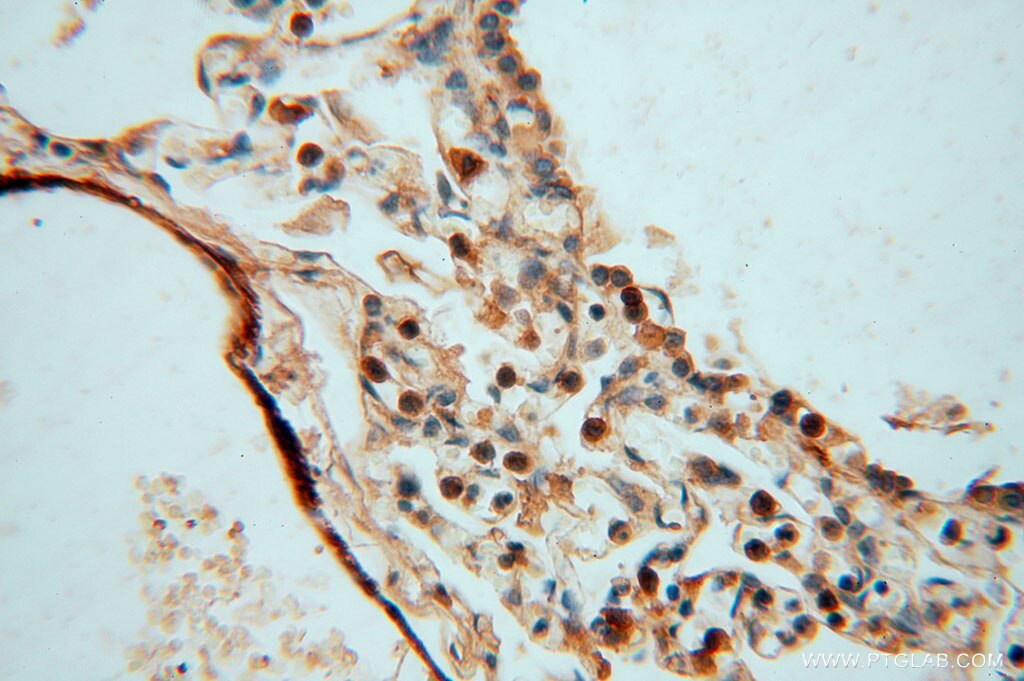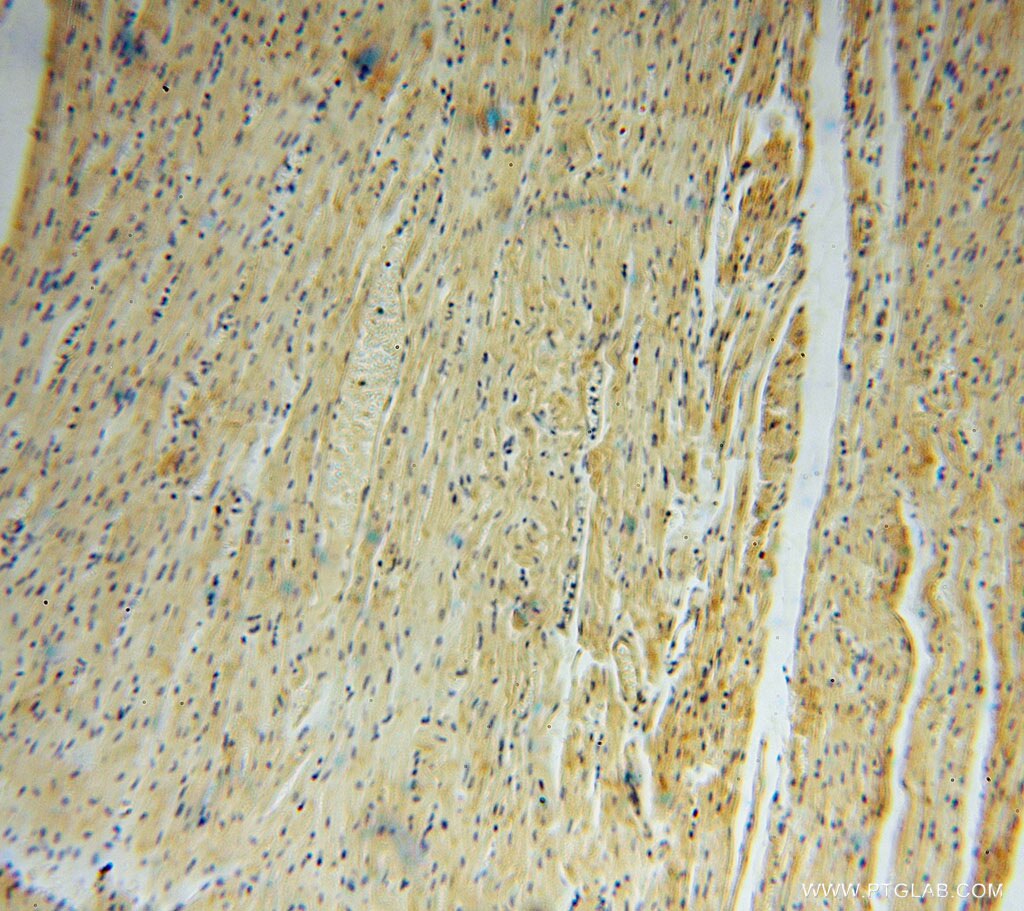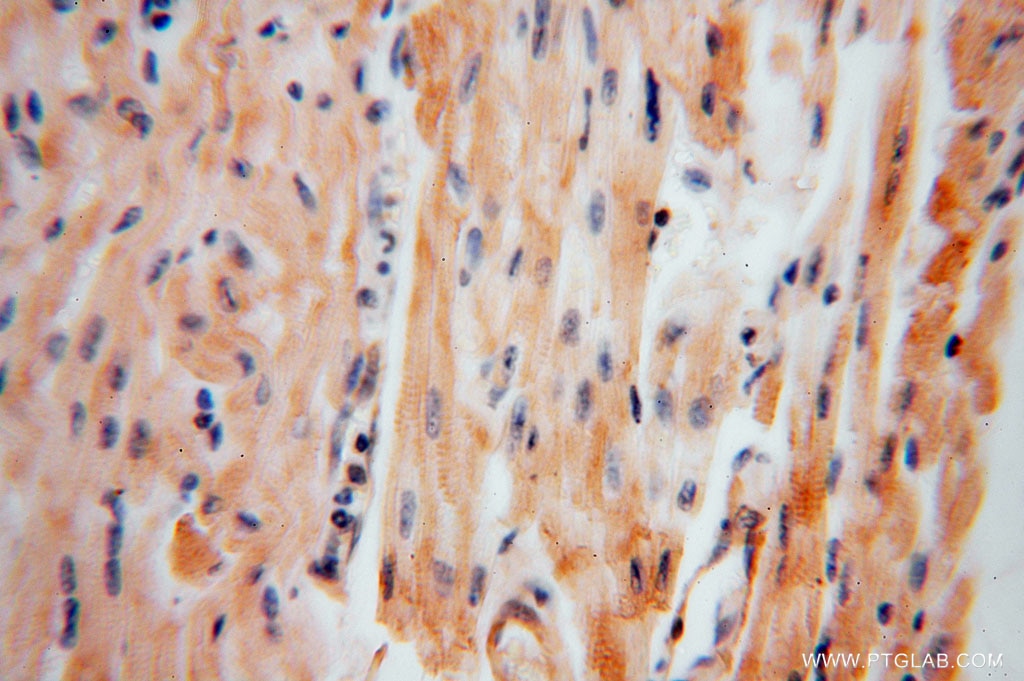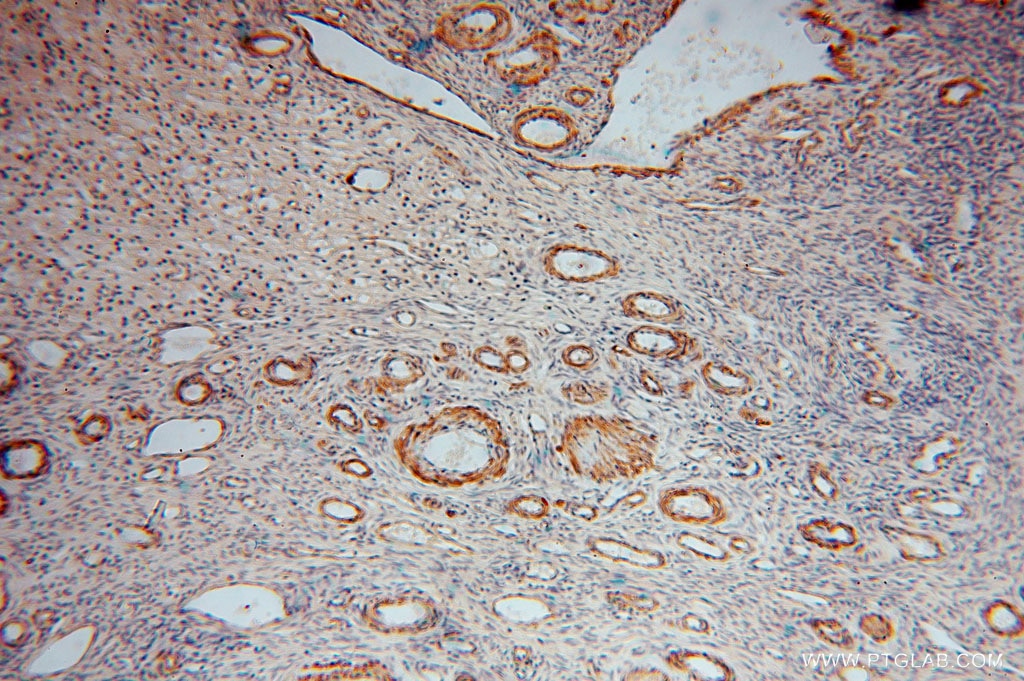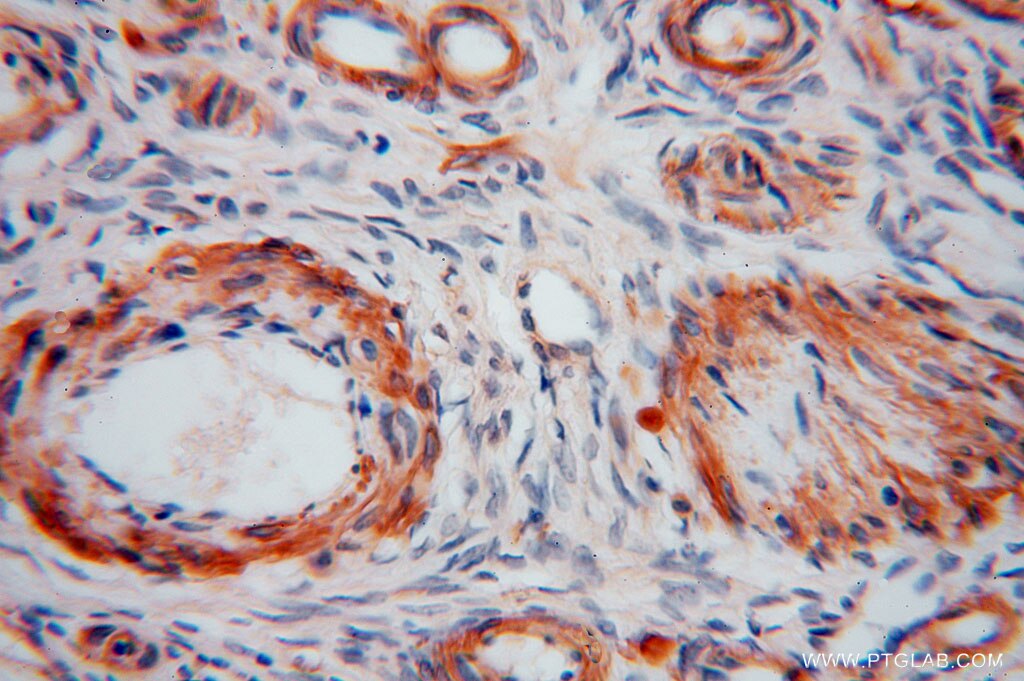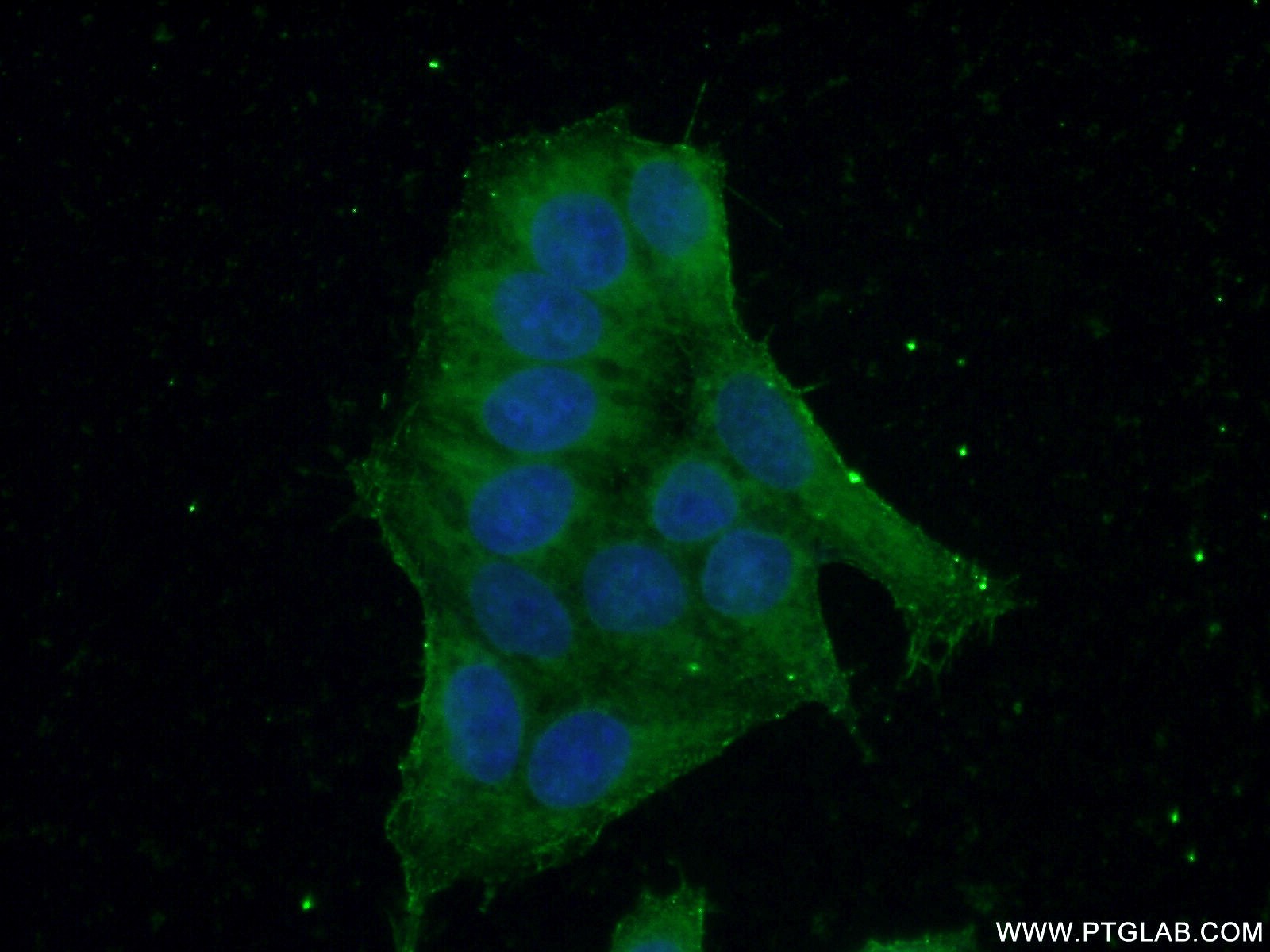- Phare
- Validé par KD/KO
Anticorps Polyclonal de lapin anti-KPTN
KPTN Polyclonal Antibody for WB, IF, IHC, ELISA
Hôte / Isotype
Lapin / IgG
Réactivité testée
Humain, rat, souris
Applications
WB, IHC, IF/ICC, ELISA
Conjugaison
Non conjugué
N° de cat : 16094-1-AP
Synonymes
Galerie de données de validation
Applications testées
| Résultats positifs en WB | cellules HeLa, cellules NIH/3T3, tissu de cervelet humain, tissu de muscle squelettique de souris |
| Résultats positifs en IHC | tissu rénal humain, tissu cardiaque humain, tissu cutané humain, tissu ovarien humain, tissu placentaire humain, tissu pulmonaire humain, tissu splénique humain il est suggéré de démasquer l'antigène avec un tampon de TE buffer pH 9.0; (*) À défaut, 'le démasquage de l'antigène peut être 'effectué avec un tampon citrate pH 6,0. |
| Résultats positifs en IF/ICC | cellules HeLa |
Dilution recommandée
| Application | Dilution |
|---|---|
| Western Blot (WB) | WB : 1:1000-1:4000 |
| Immunohistochimie (IHC) | IHC : 1:20-1:200 |
| Immunofluorescence (IF)/ICC | IF/ICC : 1:20-1:200 |
| It is recommended that this reagent should be titrated in each testing system to obtain optimal results. | |
| Sample-dependent, check data in validation data gallery | |
Applications publiées
| KD/KO | See 2 publications below |
| WB | See 10 publications below |
Informations sur le produit
16094-1-AP cible KPTN dans les applications de WB, IHC, IF/ICC, ELISA et montre une réactivité avec des échantillons Humain, rat, souris
| Réactivité | Humain, rat, souris |
| Réactivité citée | Humain |
| Hôte / Isotype | Lapin / IgG |
| Clonalité | Polyclonal |
| Type | Anticorps |
| Immunogène | KPTN Protéine recombinante Ag8785 |
| Nom complet | kaptin (actin binding protein) |
| Masse moléculaire calculée | 436 aa, 48 kDa |
| Poids moléculaire observé | 48 kDa |
| Numéro d’acquisition GenBank | BC009249 |
| Symbole du gène | KPTN |
| Identification du gène (NCBI) | 11133 |
| Conjugaison | Non conjugué |
| Forme | Liquide |
| Méthode de purification | Purification par affinité contre l'antigène |
| Tampon de stockage | PBS avec azoture de sodium à 0,02 % et glycérol à 50 % pH 7,3 |
| Conditions de stockage | Stocker à -20°C. Stable pendant un an après l'expédition. L'aliquotage n'est pas nécessaire pour le stockage à -20oC Les 20ul contiennent 0,1% de BSA. |
Informations générales
Kaptin, also named as KPTN and Actin-associated protein 2E4, originally isolated from human blood platelets and likely to be involved in the actin rearrangements occurring during activation. It plays a unique role in the actin rearrangements that accompany platelet activation and stereocilia formation. Kaptin is necessary for normal neuromorphogenesis. It may play a role in producing the sensory apparatus in hair cells.
Protocole
| Product Specific Protocols | |
|---|---|
| WB protocol for KPTN antibody 16094-1-AP | Download protocol |
| IHC protocol for KPTN antibody 16094-1-AP | Download protocol |
| IF protocol for KPTN antibody 16094-1-AP | Download protocol |
| Standard Protocols | |
|---|---|
| Click here to view our Standard Protocols |
Publications
| Species | Application | Title |
|---|---|---|
Nature KICSTOR recruits GATOR1 to the lysosome and is necessary for nutrients to regulate mTORC1.
| ||
Cell Rep CDK5-PRMT1-WDR24 signaling cascade promotes mTORC1 signaling and tumor growth
| ||
